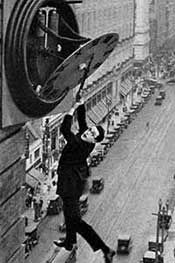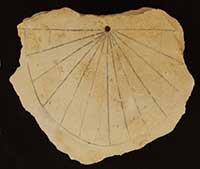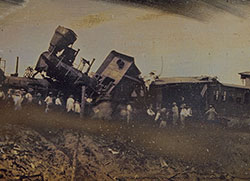It’s About Time.

Tick, tick. Time marches inexorably forward. Our lives are run by it: Get up; Race to work; Meet deadlines. Sometimes it feels as if we’re dangling from a clock like the poor man in the silent classic Safety Last.
People have always tracked time. They needed it to coordinate armies and know when to plant crops. But our perception and measurement of time have changed over the years.
In the age of sail ships had no real ship schedules. They had to wait for wind and then tack at sea to keep moving. Steam power changed that in the 1830s. Suddenly sailors and merchants could plan, but at a price — they now had to meet fixed delivery commitments.

Measuring Time. Days are easy to count; you just watch the sun. But nature’s clock doesn’t track hours and minutes. Egyptians began using sundials with twelve divisions as early as 1500 B.C. But a sundial’s day is from sunrise to sunset, so a summer “hour” is much longer than one in winter.2 Water clocks had the advantage of working at night and on cloudy days, nevertheless they often were calibrated with variable length hours to match the sundial convention. Equal duration hours didn’t become standard until mechanical clocks appeared in the 14th century.
Precision. Early clocks only had an hour hand — sufficient when travel was by foot and horse and people scheduled accordingly. The need for greater precision arose as mariners crossed oceans during the Age of Exploration and had to find position on open water. That requires longitude and longitude can only be measured if you know the exact time.
The quest for longitude was a leading issue of the day — shipping was big business. But it came to the fore in 1707 when a navigational error led to the loss of four British ships and 2000 lives.
Parliament offered a £20,000 prize to anyone who could solve the problem. Top scientists and clockmakers tried, but the award went to an obscure Scottish carpenter and clockmaker, John Harrison, who devoted much of his life to development of the chronometer.4

Standard Time. But precision is not standardization. Typically clocks were set locally by the sun. Thus Boston clocks would be about 11 minutes ahead of those in New York since Boston is further east and the sun gets here that much earlier.
This created a problem for railroads as they built intercity networks. How could they schedule if each town had its own time? British railroads adopted uniform time in the 1840s. Clocks were synchronized by a time signal sent to all stations using the recently invented telegraph. See An Invention that Shrank the World.
Standard time in the U.S. arose from an 1853 railway crash. Trains traveling in opposite directions collided head on near Pawtucket, R.I. Each crew had thought it was in the right place at the right time. Tragically their watches had been set to local time in different cities and they were not. Shortly thereafter New England railroads agreed to set their clocks to a uniform time.6

Time Today. We still count minutes and seconds, but time now is measured by atomic clocks accurate to 10-9 seconds per day. We just had a leap second on June 30, 2015 to compensate for variance between rotation of the Earth and the 24-hour clock.
GPS is completely dependent on time that is both precise and synchronized. A GPS receiver computes its position by receiving signals sent simultaneously from four satellites. It takes longer for signals from more distant satellites to arrive. Although tiny, these differences can be measured and used to compute the GPS unit’s position. Atomic clocks on the satellites have to be synchronized daily to ensure that the signals are broadcast at precisely the same time. See How Does GPS Know Where You Are?
So that briefly is the ageless story of time.
-----
- Harold Lloyd in Safety Last (1928). Image from Wikipedia.
- Michael A. Lombardi, Why is a minute divided into 60 seconds, an hour into 60 minutes, yet there are only 24 hours in a day? Scientific American, March 5, 2007.
- Sundial found in Egypt’s Valley of the Kings. Image from Wikipedia.
- Dava Sobel, Longitude: The True Story of a Lone Genius Who Solved the Greatest Scientific Problem of His Time, New York, Walker (1995).
- Detail from Daguerreotype by L. Wright of August 12, 1853, George Eastman House. On-line at Google Cultural Institute.
- Steve Courtney, Train Accident Put Idea Of Standard Time On Track, The Seattle Times, January 22, 1990.
- Image by El Pak from Wikipedia.
This article originally appeared in our free semi-monthly newsletter. To receive future issues, please add your name to the subscription list.

